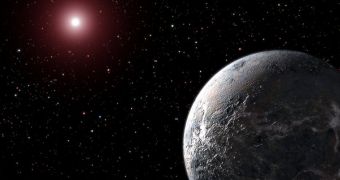Astronomers have managed to discover the first exoplanet that features a mass roughly similar to that of our own planet. The new celestial body, dubbed MOA-2007-BLG-192-L b, was originally believed to weigh 3.3 Earth masses, but new research conducted on the star it orbits proves the old theory wrong. According to the new estimates, the planet is the most similar to Earth in terms of weight and size, except maybe for Venus. Scientists don't yet know if it can sustain life, and there are some theories as to how its surface may look. They all depend on what type of star it's orbiting.
Original calculations showed that
“The result is important because this is the lowest-mass planet yet detected, and is extremely close to the mass of the Earth. Obviously, finding a true Earth-mass planet is one of the biggest goals of searches for exoplanets. We are very close to that goal now,” Scott Gaudi, who is a researcher at the Ohio State University in Columbus, says.
Now, the researchers are trying to determine what type of atmosphere the new exoplanet holds. Chances are that the very low temperatures of its star have long since prompted its freezing, and that it's incapable of hosting life of any kind. However, other astronomers say that, if a thick layer of hydrogen were to be coating the planet, then the temperatures on the surface would be high enough to allow for the development of at least some of the most basic life forms.
On the bright side, the planet is very close to its star, roughly the same distance Venus is from our Sun. With the help of the Chile-based Very Large Telescope, researcher will once again try to observe this planet in April or May, when the conditions for studying that portion of the skies will be the best.

 14 DAY TRIAL //
14 DAY TRIAL //